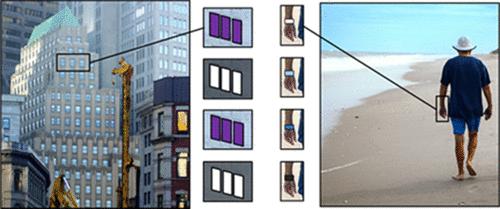当前位置:
X-MOL 学术
›
Inorg. Chem.
›
论文详情
Our official English website, www.x-mol.net, welcomes your feedback! (Note: you will need to create a separate account there.)
Investigation of the Photochromism of WO3, TiO2, and Composite WO3–TiO2 Nanoparticles
Inorganic Chemistry ( IF 4.6 ) Pub Date : 2024-05-14 , DOI: 10.1021/acs.inorgchem.4c01379 Ludovic Belhomme 1, 2 , Mathieu Duttine 1 , Christine Labrugère 3 , Emile Coicaud 1 , Aline Rougier 1 , Nicolas Penin 1 , Arnaud Dandre 1 , Serge Ravaine 2 , Manuel Gaudon 1
Inorganic Chemistry ( IF 4.6 ) Pub Date : 2024-05-14 , DOI: 10.1021/acs.inorgchem.4c01379 Ludovic Belhomme 1, 2 , Mathieu Duttine 1 , Christine Labrugère 3 , Emile Coicaud 1 , Aline Rougier 1 , Nicolas Penin 1 , Arnaud Dandre 1 , Serge Ravaine 2 , Manuel Gaudon 1
Affiliation

|
We report the synthesis of WO3, TiO2, and TiO2–WO3 nanoparticles by a polyol route, with the objective of studying the influence of the preparation method on their photochromic properties. By combining transmission electron microscopy, X-ray diffraction, X-ray photoelectron spectroscopy, and diffuse reflectance experiments, we show that low W6+ concentrations and high ripening temperatures allow the preparation of WO3 nanoparticles with high photochromic efficiency. WO3–TiO2 nanocomposites (NCs) prepared by the introduction of a TiO2+ solution in a WO3 nanoparticle suspension exhibit a strong coloring photochromism, which is attributed to the TiO2 coating of the WO3 nanoparticles as it involves the formation of W–O–Ti oxo-bonds in place of W5+–νO defects. Especially, after an oxidative treatment in order to obtain an initial pale-yellow material, such WO3–TiO2 NCs exhibit a fully reversible photochromism with a large contrast between the colored and bleached state. They could therefore be incorporated in hybrid smart films for solar control on building window glasses. On the other hand, while the WO3–TiO2 NCs are functionalized with DPA (n-dodecyl phosphonic acid), the as-prepared nanocomposites exhibit exacerbated coloring contrast but with a nearly nonreversible photochromism (very limited bleaching), which makes them good candidates for the fabrication of smart UV-sensor devices that can indicate the cumulative UV dose which is received.
中文翻译:

WO3、TiO2 和复合 WO3-TiO2 纳米颗粒的光致变色研究
我们报道了通过多元醇途径合成 WO 3 、TiO 2 和 TiO 2 –WO 3 纳米粒子,其目标研究制备方法对其光致变色性能的影响。通过结合透射电子显微镜、X射线衍射、X射线光电子能谱和漫反射实验,我们表明低W 6+ 浓度和高熟化温度可以制备WO 3 具有高光致变色效率的纳米粒子。通过在 WO 3 纳米粒子悬浮液中引入 TiO 2+ 溶液制备的 WO 3 –TiO 2 纳米复合材料(NC)表现出强烈的着色光致变色性,这归因于 WO 3 纳米粒子的 TiO 2 涂层,因为它涉及形成 W-O-Ti 氧键来代替 W 5+ –ν O 缺陷。特别是,经过氧化处理以获得初始浅黄色材料后,此类WO 3 –TiO 2 NCs表现出完全可逆的光致变色性,着色和漂白之间具有很大的对比度状态。因此,它们可以被纳入混合智能薄膜中,用于建筑窗玻璃的阳光控制。另一方面,虽然 WO 3 –TiO 2 NCs 用 DPA(正十二烷基膦酸)进行功能化,但所制备的纳米复合材料表现出加剧的着色对比度,但几乎没有不可逆的光致变色(非常有限的漂白),这使得它们成为制造智能紫外线传感器设备的良好候选者,该设备可以指示所接收的累积紫外线剂量。
更新日期:2024-05-14
中文翻译:

WO3、TiO2 和复合 WO3-TiO2 纳米颗粒的光致变色研究
我们报道了通过多元醇途径合成 WO 3 、TiO 2 和 TiO 2 –WO 3 纳米粒子,其目标研究制备方法对其光致变色性能的影响。通过结合透射电子显微镜、X射线衍射、X射线光电子能谱和漫反射实验,我们表明低W 6+ 浓度和高熟化温度可以制备WO 3 具有高光致变色效率的纳米粒子。通过在 WO 3 纳米粒子悬浮液中引入 TiO 2+ 溶液制备的 WO 3 –TiO 2 纳米复合材料(NC)表现出强烈的着色光致变色性,这归因于 WO 3 纳米粒子的 TiO 2 涂层,因为它涉及形成 W-O-Ti 氧键来代替 W 5+ –ν O 缺陷。特别是,经过氧化处理以获得初始浅黄色材料后,此类WO 3 –TiO 2 NCs表现出完全可逆的光致变色性,着色和漂白之间具有很大的对比度状态。因此,它们可以被纳入混合智能薄膜中,用于建筑窗玻璃的阳光控制。另一方面,虽然 WO 3 –TiO 2 NCs 用 DPA(正十二烷基膦酸)进行功能化,但所制备的纳米复合材料表现出加剧的着色对比度,但几乎没有不可逆的光致变色(非常有限的漂白),这使得它们成为制造智能紫外线传感器设备的良好候选者,该设备可以指示所接收的累积紫外线剂量。































 京公网安备 11010802027423号
京公网安备 11010802027423号